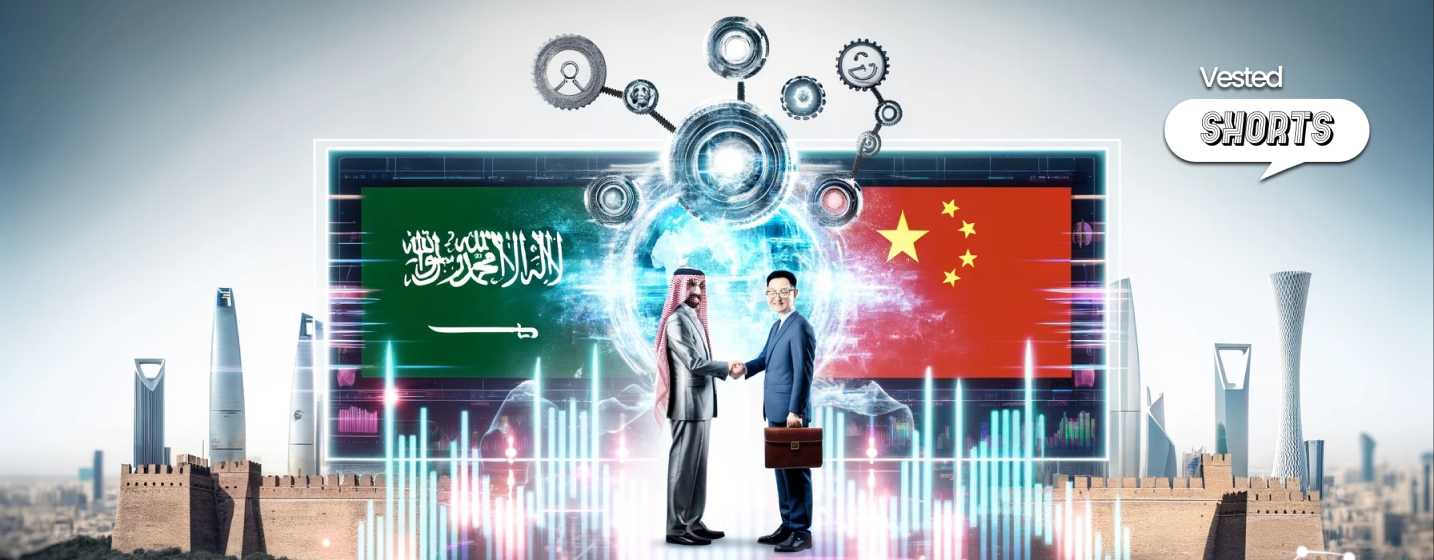In today’s edition
- Saudi invests in AI
- Costco rides inflation wave
- China localizes chip production
- Solana’s crypto integration
Market Snapshot
US stock markets closed mixed on Friday, influenced by the latest inflation data which aligned with market predictions and fueled speculation about potential Federal Reserve interest rate cuts later this year.
The Personal Consumption Expenditures (PCE) report for April showed a 0.3% increase overall, meeting analysts’ forecasts. The core PCE, which excludes food and energy, rose by 0.2%, slightly below expectations and indicative of easing inflation pressures. This softening could reduce the need for further aggressive rate hikes by the Fed.
Major equity indexes ended the week lower despite the favorable inflation report. The S&P 500 fell 0.5% to 5,277.51, snapping a five-week winning streak. The Dow Jones dropped 1.0% to 38,686.32, and the Nasdaq Composite declined 1.1% to 16,735.02. However, the key indices posted strong monthly gains: the S&P 500 was up 4.8% for May, and the Nasdaq climbed nearly 7%, with both showing robust year-to-date increases, suggesting a positive longer-term market outlook despite short-term fluctuations.
Stock market closing data for the week of May 27th to May 31st, 2024
News Summaries
In a strategic move to diversify its technological investments and reduce reliance on US-dominated AI sectors, Saudi Arabia’s Prosperity7, a venture arm of Aramco, has contributed to a $400 million funding round for Zhipu AI, marking it the first high-profile foreign investment in China’s generative AI sphere. This investment values Zhipu at approximately $3 billion. Historically, Chinese AI firms like Zhipu were predominantly supported by domestic funds due to US restrictions, but the involvement of Saudi funds underscores a broader trend of seeking international capital and expertise to foster a globally competitive AI industry in China. This initiative not only opens new markets for Chinese technology but also aligns with Saudi ambitions to cultivate a more self-reliant tech ecosystem amidst increasing geopolitical tensions around technology and trade.
Costco Wholesale (Explore: COST) has effectively leveraged the US inflation wave to attract millions of consumers to its $60 per year membership model, resulting in significant growth in its market presence and financial performance. Since 2019, Costco’s membership has increased from under 55 million to 74.5 million, with a notable 3.5 million increase in just the last nine months, demonstrating robust consumer demand despite ongoing inflation. This surge has been reflected in its financial outcomes, with the retailer posting a 9.1% increase in net sales to $57.4 billion and a 29% rise in net profits to $1.7 billion in the recent quarter. The company’s strategy of maintaining low inventory levels and offering cost-effective bulk purchasing options continues to appeal to a wealthier demographic, contributing to high renewal rates and consistent store traffic, reinforcing its position as a leader in the warehouse club segment amidst economic fluctuations.
China’s major chipmakers, including SMIC and ChangXin Memory Technologies, are aggressively transitioning towards local suppliers for essential materials like wafers, chemicals, and gases, in response to US export controls. This push, driven by a national mandate, seeks to strengthen the domestic supply chain, with efforts accelerating notably since late 2020. Chinese chipmakers, facing potential supply disruptions from foreign markets, are now offering domestic suppliers nearly unlimited opportunities to test and verify their products, compared to previously limited chances. These efforts are supported by government subsidies and credits, encouraging a shift from foreign to local sources particularly for processes involving 55-nanometer to 40-nanometer chips, and plans to expand to more advanced 28-nanometer processes. This strategic pivot not only aims to safeguard production continuity but also significantly reduces China’s dependency on international suppliers, posing challenges for foreign chemical and material providers in the market.
From the World of Crypto
PayPal’s recent launch of its stablecoin $PYUSD on Solana signifies a major step towards integrating traditional web2 payment systems with the blockchain, reinforcing Solana’s appeal as a burgeoning hub in the crypto space. This move, coupled with Stripe’s new checkout feature allowing $USDC transactions across its vast network of websites, showcases Solana’s growing influence in everyday financial transactions. Furthermore, Visa’s adoption of Solana for its stablecoin transactions, leveraging Solana’s capability to handle over 5,000 transactions per second, underscores the blockchain’s technical robustness and suitability for high-volume operations.
The introduction of significant crypto protocols like GMX, a decentralized derivatives exchange, and LayerZero, a cross-chain communication service, to the Solana blockchain has further boosted its ecosystem. GMX brings a substantial trading volume to Solana, enhancing its liquidity and market activity, while LayerZero facilitates easier interoperability between different blockchains, amplifying Solana’s role as a central node in the network. This strategic expansion attracts not only a surge in transactions but also potential future integrations with major Ethereum projects, indicating a broadening scope for Solana’s application.
The collective adoption and integration of these platforms into Solana’s environment have led to a marked increase in its transactional capacity and utility, positioning it as a significant player in the decentralized finance (DeFi) sector. With stablecoins like $PYUSD and $USDC now operational, Solana is set to make digital currency transactions as straightforward as traditional banking, enhancing user and developer engagement. This development suggests a promising growth trajectory for Solana, driven by both technological advancements and strategic partnerships.












